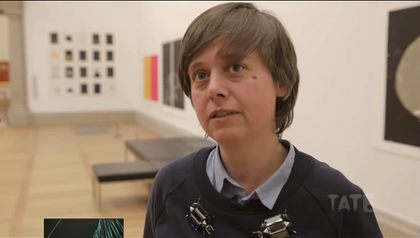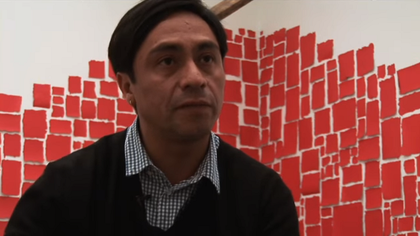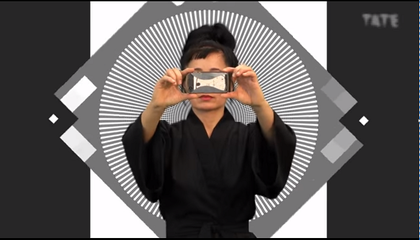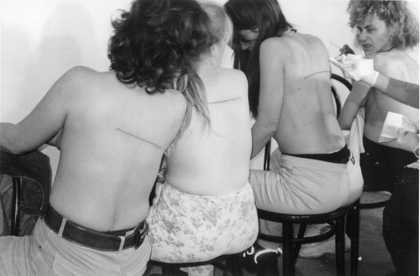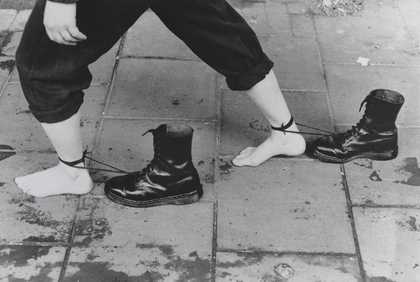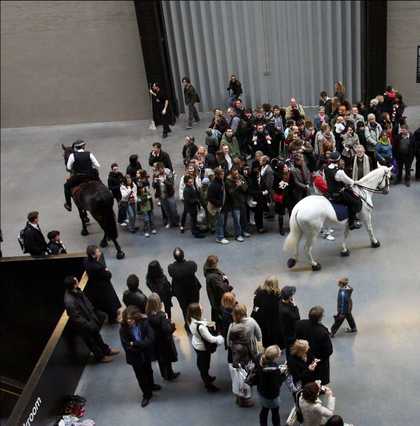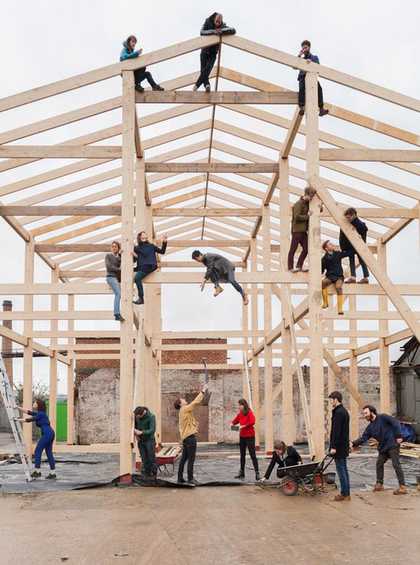A line of women stand facing a blank brick wall at Tate Modern. They don’t move for an hour while people in the gallery stop and stare. This is a performance work by Spanish artist Santiago Sierra. The women are all homeless, and were paid the price of a night in a hostel to stand there for the duration. Watching them is a disquieting experience, recalling the school punishment of standing in the corner. The discomfort is, of course, intentional.
Santiago Sierra: It’s one of the most important pieces done around the concept of work and punishment, which is what we have in our society. The instruction was to be facing the wall, with no movement. The interesting thing is also that when you have somebody… when you don’t see the face of somebody, their position becomes more active, you know, you have to think why does she not show me the face, you know. And in a world full of images, this image, which is an anti image in a way, becomes full of meaning, because the person has to create what the person doesn’t see.
Sierra chooses not to show his own face on film, saying he prefers not to feed the cult of artist as personality. He may also be wary of his image becoming tabloid fodder. Almost everything Sierra does is designed at some level to provoke, and unsurprisingly, he has been accused of being exploitative. In the past he has paid illegal street vendors in Venice, many of them Africans, $60 to have their hair bleached blonde. He has piped exhaust fumes from cars into a former synagogue in a small town in Germany. People could only enter wearing breathing apparatus and accompanied by a fireman. His most recent London show, at the Lisson Gallery, featured a series of sculptures cast from human excrement. As so often with Sierra, the story behind the work is as significant as the finished artifact. The excrement was collected in New Delhi and Jaipur by the low-caste poor who scrape a living from such appalling work. Transmuted into art, the results are pointedly made available to another sort of collector in exchange for filthy lucre. In 2004, Sierra sprayed a number of Iraqi volunteers with quick-setting polyurethane foam. The husk-like impressions left behind immediately conjured images of hooded torture victims in Abu Ghraib.
Santiago Sierra: The material I use, this material is to protect merchandise. I think it is appropriate, because this war is a war for money. How to solidificate the presence of humans. Also, how to create an image very close to the Abu Ghraib images, and I think that the Abu Ghraib images were very present in the reviews and everywhere. And at the same time to make something that you can read it years ago, like right now, for somebody who doesn’t know about the Iraqi War, the piece is real, because what you have is somebody making something of the people. So somebody is passive, and somebody is working on it with a purpose to get something else. So I think it is very universal.
A video work in Tate’s own collection shows another performance in which Sierra paid drug addicted prostitutes to have a line tattooed across their backs.
Santiago Sierra: What I did was to find the women in the places where they offered the body, and to ask her for the piece. They accepted, and then when I get a person who knows how to make tattoos. It was not difficult. I know what I am talking about: People need money, people have to work, and I am looking for strong images to express this.
Sierra constantly sets up oppositional forces between work and worth, between poverty and the exclusivity of the international art world, between the people who are invisible in society, the junkies, the homeless, the recent immigrants, and the art gallery as a venue where viewing and viewer are centre stage. We are implicated, put on the spot, and so is the artist. This is not art as moral flag-waver.
Santiago Sierra: It is not the kind of art that says ‘George Bush is a mother-fucker’. Because it creates, in everybody who sees something like that [the idea of] a relationship like brothers: ‘We are good people and George Bush is a mother-fucker.’ And what I am saying is nothing like that. I am not putting my finger in the responsibility for all of this. And it creates an uncomfortable situation because the people who are watching art are high class or at least high cultured people. And these people become uncomfortable because it is a portrait of themselves.

